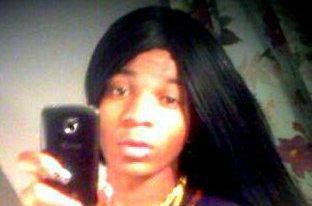The Search For Sage Smith: Black Victims and Media Neglect

You probably haven’t heard much about Sage Smith.
Dashaad “Sage” Smith went missing in Charlottesville, Virginia. The day Smith disappeared, she told her father that she was meeting Eric McFadden for a date but McFadden told police she never showed up. Shortly after being questioned by the police, McFadden left town. While he is not considered a suspect, McFadden is wanted by police for further questioning in the case.
The likely reason why you haven't heard of Smith? She's black and she's trans.
Local and national media have only provided minimal coverage of Smith’s disappearance. The Huffington Post, which has done an excellent job of highlighting cases of black missing persons, was the first national new outlet to cover Smith’s story. Darryl C. Hannah writes:
Since Sage Smith was first reported missing on Nov. 22, there has been virtually no mainstream media coverage of her abduction. There has only been one local story produced, and in it reporters consistently use the wrong pronouns to identify her, and the story only mentions the name she lives by once, as though it were a nickname.The silence surrounding Smith’s story is troubling considering the elevated numbers at which trans women are targeted for violence. Last year saw the highest number of fatal hate crimes against lesbian, gay, bisexual and transgender people since the National Coalition of Anti-Violence Programs began collecting data in 1998. Furthermore, 40 percent of anti-LGBT murder victims in 2011 were transgender women.
The mainstream media's decision to ignore the disappearance of Smith and people like her—black; LGBT—is nothing new. In 2007, MSNBC notoriously bumped a segment about Stepha Henry, a missing black student who was later found murdered, and aired a story about Paris Hilton in it’s place.
In a 2011 performance, the late comedian Patrice O'Neal joked about this issue, commenting on the the slanted value judgments which dominant media outlets (sometimes) inadvertently place on the lives and stories they cover. The names of missing white women and girls often become household names and their lives are considered "valuable" or "top shelf," quips O'Neal, while women of color are rendered invisible, nameless, and their lives unworthy of mention.
The New York Times and other news outlets demonstrated this very tradition of disregard recently when they treated Kasandra Perkins' death as a footnote to her boyfriend, NFL player Jovan Belcher (who murdered her before taking his own life) and his Kansas City Chiefs teammates.
Keeping women like Perkins and Sage in mind, mainstream media outlets might want to reevaluate how they prioritize the stories they cover and how they choose to frame them.
Often news coverage and getting the story right can serve a greater good beyond informing the public; it can bring closure for grieving families, expedite search processes, and encourage law enforcement to do everything they can to help those in need.
Morgan Harrington's case provides a stark contrast to these cases. Following her disappearance from a Metallica concert in Charlottesville, an extensive search brought national attention to the effort to find Harrington, a student at Virginia Tech. The story quickly spread and a television segment about her disappearance generated a flurry of new tips on the case.
It's unfortunate that search efforts for Smith have not be afforded the same media spotlight that countless white victims received after they went missing.
Kenneth Jackson, Smith’s cousin, said he sees a stark contrast between the way media and law enforcement treated Harrington’s disappearance and how they’re dealing with Smith’s.
"We don't want special treatment, just equal treatment," he said.
Bridget Todd teaches courses at Howard University. She blogs about race and politics. Her writing has appeared on the Huffington Post, Jezebel, DCentric, and Racialicious. Follow her on Twitter @BridgetMarie

No comments: